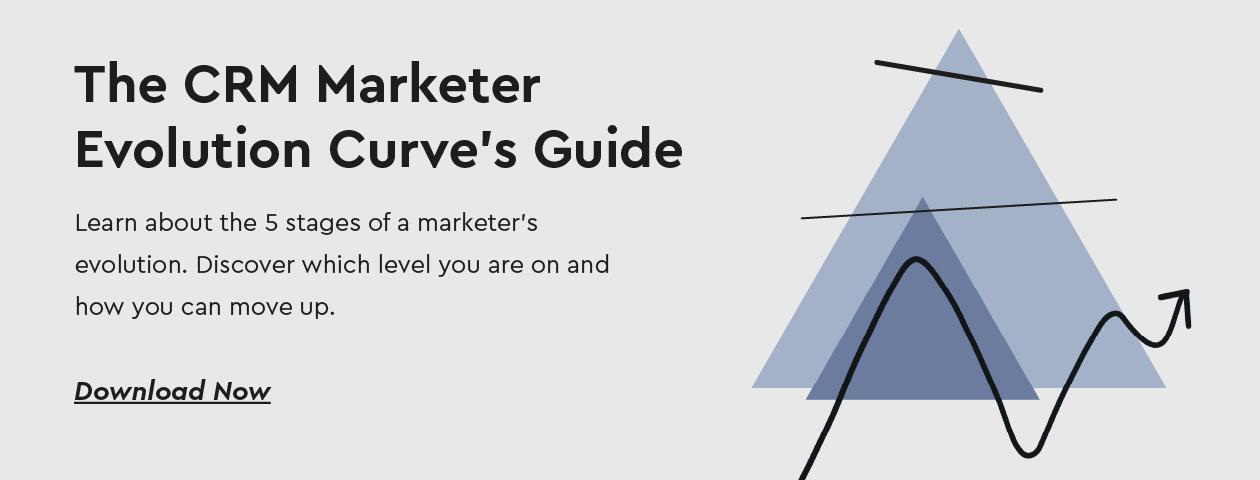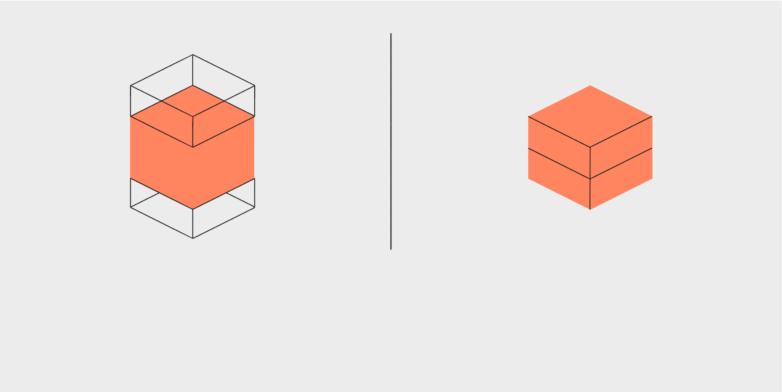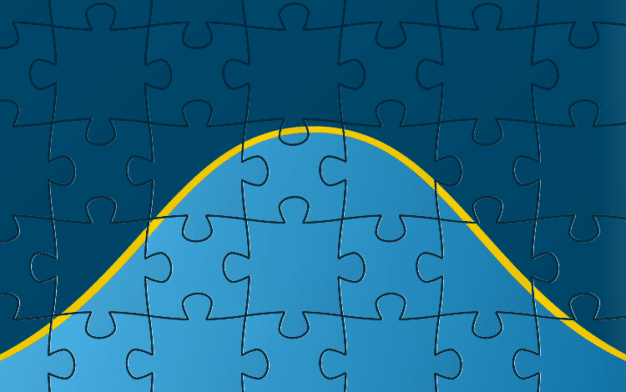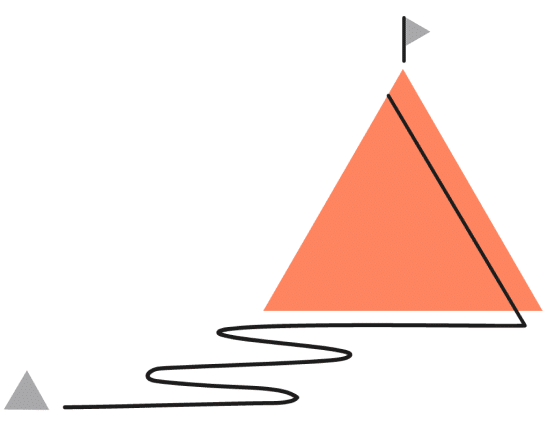What is The Marketing Funnel?
The marketing funnel is a framework that imagines the customer journey as a funnel since its shape helps illustrate the fact that as one advances across the stages, less customers remain with the brand. Marketing funnels are used both in B2B and B2C marketing organizations, becoming one of the most used frameworks in the practice. Common stages for the marketing funnel include: Awareness, Interest, Consideration, Purchase and Advocacy. However, variations to this list exist.
Marketers using the marketing funnel map their high-level strategic plans and more tactical campaigns to each funnel stage. Furthermore, specific KPIs, traditionally tied to the movement between the stages, are set for each stage.
The CRM Marketer evolution curve
What is AAARRR (The “Pirate Metric”)? – The Marketing Funnel Stages
With marketers leveraging various KPIs to track and measure customer movement through the marketing funnel, the pirate metrics are a way to group the different metrics and align them to stages of the marketing funnel. These groupings are awareness, acquisition, activation, revenue, retention, and referral, and are known as pirate metrics since their acronym is AAARRR, the known pirate growl.
- Awareness metrics group together anything that takes place before a user is acquired. This can include, page visits, paid and organic impressions, bounce rates and more.
- Acquisition metrics include conversion rates, click-through rates (CTR), social engagement rates, and cost-of-acquisition, among others.
- Activation metrics are usually represented by number of product signups, freemium-to-paid rates, product-qualified leads and lead-to-signup conversion rates.
- Revenue metrics group elements that relate to the paying customer such as monthly recurring revenue (MRR), annual recurring revenue (ARR) and customer lifetime value.
- Retention metrics focus on measurements such as retention rates, churn rates, customer survivability, and payback period.
- Referral metrics finally focus on measuring the customers who become brand advocates including, but not limited to, review rates, social shares, referred business, and referral rate.

Differences between digital and traditional marketing funnels
The marketing funnel methodology can be adopted for with online, offline or a combination of both marketing strategies. For example, an organization with a mostly physical store presence might consider mapping strategies such as billboard or flyer marketing for the awareness stage and in store marketing for the consideration stage. This in contrast to a digitally native brand who might use Facebook advertising for the awareness stage and interstitial ads during a visitor’s session at the consideration stage. Of course, marketers for brands executing both traditional and digital marketing campaigns will leverage a combination of strategies.
Similarly to how marketers can use different marketing techniques for digital and traditional funnels, they can also measure customer progress differently. For example, a more traditional, offline, approach might decide to measure store foot traffic during its acquisition stage, while an online marketer will be more focused in click-through rates. However, both might be measuring cost-of-acquisition.
The CRM Marketer Evolution Curve’s Guide
Learn about the 5 stages of a marketer’s evolution. Discover which level you are on and how you can move up.
Funnel marketing strategy
When planning their marketing strategy based on a funnel approach, experienced marketers divide their funnel into sections. The higher or upper funnel takes into account the first few sections of the funnel, traditionally the awareness and interest stages. The mid-funnel area considers the consideration phase. While the bottom or lower funnel section considers the purchase and advocacy stages. Some even consider the advocacy as a “post-funnel” stage.
Following this breakdown, marketers can create integrated campaigns and strategies that align with the goal of advancing customers through the various stages from top of funnel (TOFU) to bottom of funnel (BOFU). For example, marketers might consider using a combination of lookalike audiences to target customers across digital platforms and informational newsletters during the TOFU and more specific product recommendations and pricing information during the BOFU.
Breaking down the funnel marketing strategy into sections can also help set macro-metrics that take into account more than one stage at a time such as conversion rate from visitor to buyer.

Marketing funnel automation
Automating the marketing funnel allows marketers to scale their marketing operations while catering to customer preferences. A traditional form of marketing funnel automation is the creation of customer journeys in what is known as blank canvas journey builders. This approach requires marketers to imagine an ideal set of steps a customer should take to move from one stage to the next. For example, determining that customers in the interest stage should receive an email with some product features and three days later an SMS with a discount. The problem with this approach is that not all customers behave the same way, and for some the three days might be too soon for a follow-up while for others it might be too late.
Even with this well known fact, most martech solutions used to automate marketing funnels require the user to create complex customer flows that are rigid as well as difficult to maintain and keep updated. For a more dynamic approach to funnel marketing automation and orchestration visit the Optimove Product page or request a Web demo.
Get a personalized tour of Optimove
Let us show you how to go from tens to hundreds of segments


